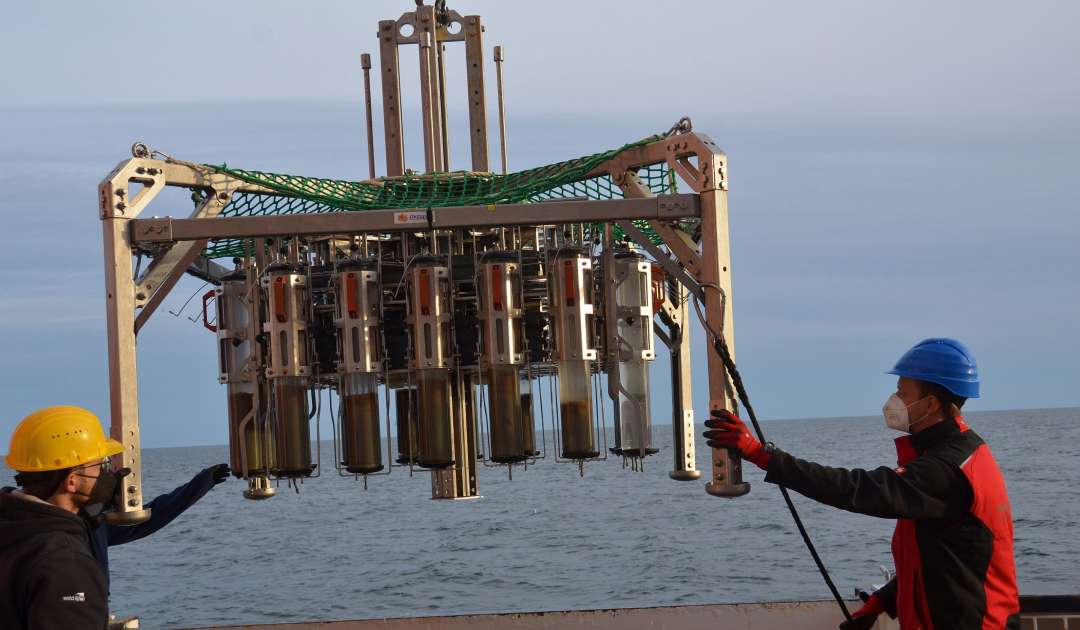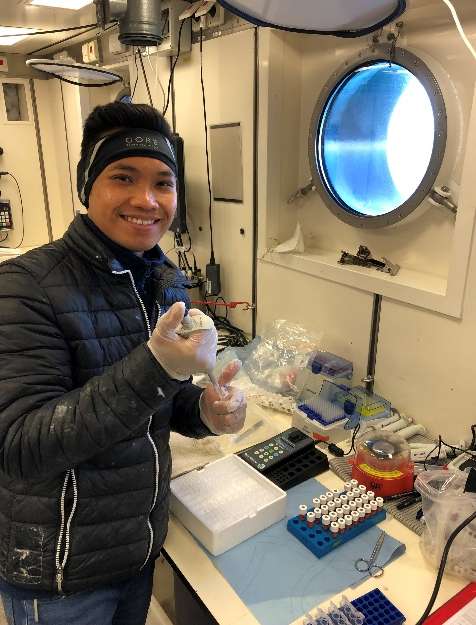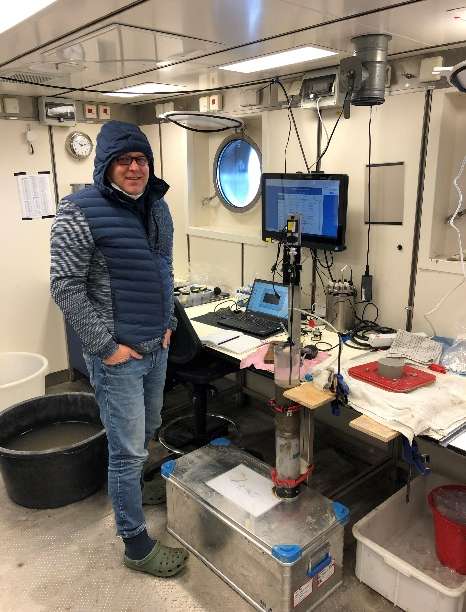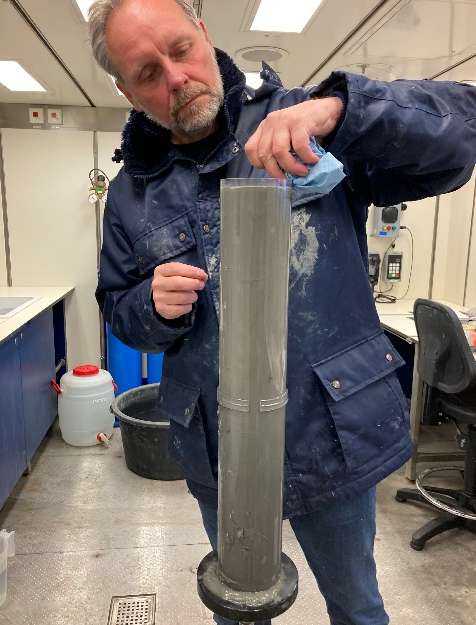
We are now more than half way through our expedition to the Aleutian Trench. We have had some exciting weeks, with lots of sediment handling, long hours in the cold room and new and surprising findings. We three are the participants from the Danish Center for Hadal Research (HADAL). As the core of our work, we investigate element cycling and microbial life in the hadal realm – the deepest part of the global ocean, which largely remains unexplored. During previous expeditions to other trench settings, we have shown that trenches act as deposit centers for organic material and are hot spots for biological activity in the deep sea. So in contrast to what one might expect—and as indicated by the name “hadal”, which is derived from the realm of death in the Greek mythology—trenches are microbial “oases”. The intensified activity is mainly mediated by microbial communities that appear to flourish at the extreme pressure. But trenches are also very different, they underly surface oceans of different productivity, and pathways for material transport sustaining hadal life are different. Trenches are geographically isolated from each other and the biological connectivity between trenches it is still unknown. To what extent do the respective trenches host unique biological communities adapted to the extreme conditions?
Our preliminary findings show that the hadal sediment of the Aleutian Trench also hosts highly active microbial communities. But in contrast to other trench settings, the seabed along the Aleutian Trench axis consists of fluid mud rather than consolidated sediment. This is presumably facilitated by glacial run off channeling fine material towards the deep ocean. But deeper sediment layers also bear distinct banded imprints of seismically-driven mass wasting events and volcanic activity. The fluid mud is largely deprived of fauna, but acts as a ‘microbial reactor’ with high diagenetic activity. This is exemplified by high ammonia concentrations in the sediment as compared to adjacent abyssal sites and high O2 consumption rates measured in recovered sediment cores. These novel findings are exciting and raise a number of questions: What are the sources of the organic material that sustains the elevated microbial activity? What microbial pathways are involved in the degradation of the organic material, and who are the microbial players involved in these processes? How do microbial communities in the Aleutian Trench compare to those from other trench settings with consolidated sediment, from the adjacent abyssal plains and from marine sediments in general? Are the communities unique and adapted to these special settings? How important is the trench for sequestration of organic carbon and climate feedback? What is the overall biogeochemical function and importance of the Aleutian trench? These questions and many more will be addressed by examining the samples of seabed that are being collected and from the ongoing experiments we are conducting during the long cold hours in the climate-controlled room on board RV SONNE.
It is a privilege and pleasure to work with many good colleges investigating exciting and important questions about the function of the global ocean. But after almost four weeks at sea, numerous hours in a 3-4 oC cold laboratory, occasionally interrupted by glances at an endless ocean and a grey misty horizon – one is slowly beginning to dream of setting foot on shore again.


